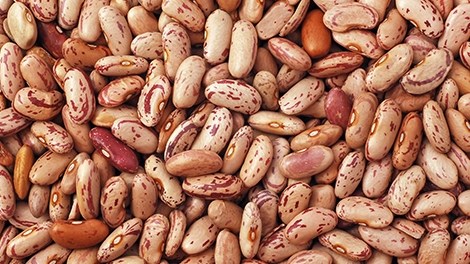Agriculture
#Agbiz: South Africa’s 2021/22 summer crops in good shape─── 05:00 Tue, 31 May 2022

As usual on the Agri Hour, Wandile Sihlobo, chief economist at the Agricultural Business Chamber of South Africa, Agbiz, provides a weekly insert about the latest on the global as well as South African agricultural markets.
He also provides more information about the latest developments in the agricultural sector.
See PODCAST below
This week Sihlobo shares what South Africa’s summer crop looks like and what can be expected with regard to crop numbers.
“South Africa’s 2021/22 summer crop harvest activity is underway and the initial yields reports are positive. Thus, we welcome the positive picture painted by the Crop Estimates Committee’s (CEC) fourth production estimate released this past week. The CEC kept most production estimates unchanged from last month except for soybeans.
ALSO READ: SA summer crop production estimates lifted from February levels
“The soybeans 2021/22 production estimates was lifted by 2% from last month to 1,93 million tonnes. If this materialises at the end of the season, it will be the largest harvest on record. The major factors underpinning the harvest are expansion in area plantings and expected better yields in some regions.
“The expected 2021/22 sunflower seed production was kept unchanged from last month, at 963 000 tonnes. This is the second-largest harvest, primarily due to an expansion in area plantings and expected better yields in some regions.
“The improvement in the sunflower seed harvest, and indeed, the entire vegetable oils market, comes at an appropriate time when there are worries that there could be supply constraints in the coming months in the global market. The Russian invasion has devastated Ukraine's exports and agricultural activity, thus limiting sunflower oil exports.
ALSO READ: Erratic weather conditions in Southern Africa disrupt agricultural activity
“Moreover, the uncertainty about Indonesia's exports of palm oil exports, following the recent ban and suspension of it, is also an additional risk to the global vegetable oil supplies. Therefore, the increase in domestic output will slightly lessen South Africa's reliance on imports, although imports will likely still be required to meet our annual needs,” explains Sihlobo.
He further adds that in the case of maize, the CEC kept the production estimate unchanged from last month at 14,72 million tonnes. A harvest of this size, 14,72 million tonnes, is decent and well above the 10-year average of 12,8 million tonnes and annual maize consumption of 11,8 million tonnes.
“About 7,55 million tonnes are white maize, and 7,17 million are yellow maize. The yearly decline from 16,32 million tonnes in the 2020/21 season is mainly due to reduced area plantings and expected lower yields in some regions. Notably, if this harvest materialises, South Africa will likely remain a net exporter of over three million tonnes of maize in the 2022/23 marketing year, which started this month, May 2022.
ALSO READ: Agri podcast: Summer crops suffer due to rain
“Other crop production estimates were slashed from April estimates, such as groundnuts, whose production is at 70 400 tonnes (up 9% y/y). Dry beans production estimate is at 55 995 tonnes (down 3% y/y). Sorghum also remained unchanged at 137 220 tonnes, down by 36% y/y.
“Overall, these mainly optimistic production data will have minimal impact on prices. As with the previous few years, the domestic grains and oilseeds prices primarily follow the global markets. The Russia-Ukraine war worries continue to present upside pressures on prices, reflected in the South African grains market.
“Still, the fact that supplies improved provides comfort as far as the availability of essential grains and oilseeds is concerned. The upside price movements bode well for farmers in areas that didn't experience much crop damage. They stand to benefit from slightly higher grains and oilseeds prices. Meanwhile, the consumers, livestock and poultry producers will likely experience increased costs, concludes Sihlobo.














